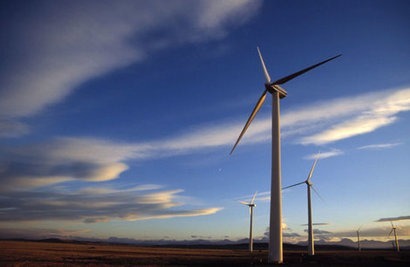
The PCWIS was co-funded by the Canadian Wind Energy Association (CanWEA) and Natural Resources Canada (NRCan). The Pan-Canadian study leverages numerical weather prediction (NWP) models and advanced statistical techniques to provide wind data across Canada and parts of the northern US. The resulting dataset includes three years of meteorological data at 10-minute intervals and 2 km horizontal resolution as well as detailed energy production profiles for nearly 55,000 potential onshore wind project locations.
Vaisala played a key role in the project, supporting primary contractor, GE Energy Consulting. CanWEA’s study is the first of its kind to cover the whole of Canada and makes use of Vaisala’s wind modeling expertise to investigate and quantify the operational impact of integrating large quantities of wind energy into the grid. It also presents a number of new cross-border opportunities, given Canada’s access to many portions of the northern US electrical grid.
When bringing such a large volume of wind energy online in a short space of time, it will be important to anticipate pressures this may create on the Canadian grid, and take steps to accommodate the associated variability to maintain the integrity and reliability of the system.
“With an already strong base of operational wind farms that place Canada seventh in the world for installed capacity, Canada’s outstanding wind resources provide an opportunity to significantly multiply its wind power output over the next 15 years” said Robert Hornung, CanWEA President. “Wind energy can play a significant role in a shift towards a low carbon economy that will reduce Canada’s dependence on fossil fuels in a number of sectors, including energy and transportation.”
Mr Hornung added that North America has excellent wind resources, and wind energy’s installed cost is becoming increasingly competitive. It is crucial to ensure reliable grid operation as large amounts of wind energy are brought online. Efficiently and reliably making the transition to wind energy requires identifying how infrastructure and markets must adapt to accommodate its generation on a grand scale. The PWCIS provides a deeper understanding of the management of wind resource variability from a national and cross-border perspective.
Vaisala developed wind production profiles based on wind speed data provided by Environment Canada, allowing the project team to build and model a number of different wind penetration scenarios. In turn, the study was able to identify the possible influences of wind energy on system operations and evaluate options, such as advanced wind forecasting and more flexible dispatching of other generation resources, to mitigate any challenges to reliability. The study analyzed 20 percent and 35 percent system total scenarios and ultimately found that Canada can integrate large amounts of wind energy both reliably and cost-effectively.
Bahman Daryanian, the study’s technical director and project manager, and also Technical Director for GE’s Energy Consulting business, said that the combination of Vaisala’s expertise with CanWEA’s knowledge of wind power and Canadian energy markets within the study paves the way to a greater understanding of the role wind energy can play in Canada’s future energy mix.
Vaisala is an expert in wind measurement, project assessment, and energy forecasting. The company offers dedicated renewable energy consulting and information services, following its acquisition of 3TIER, Inc. in late 2013 and specialises in supporting large-scale integration studies. It is a recognized industry leader in applying weather simulation modeling to accurately predict wind power production over large geographic areas and long-term climatological windows.
For additional information:

